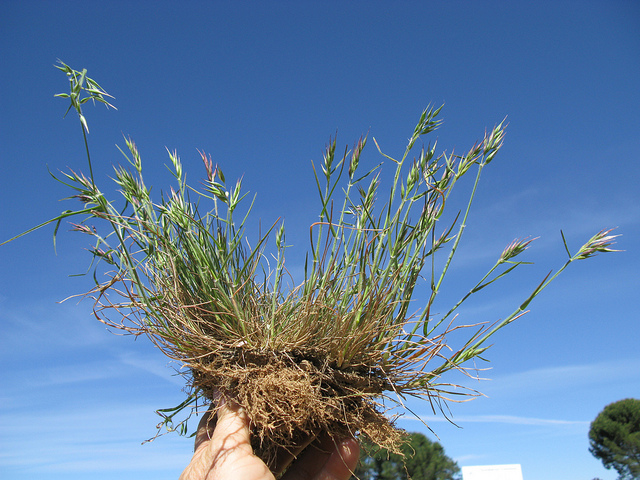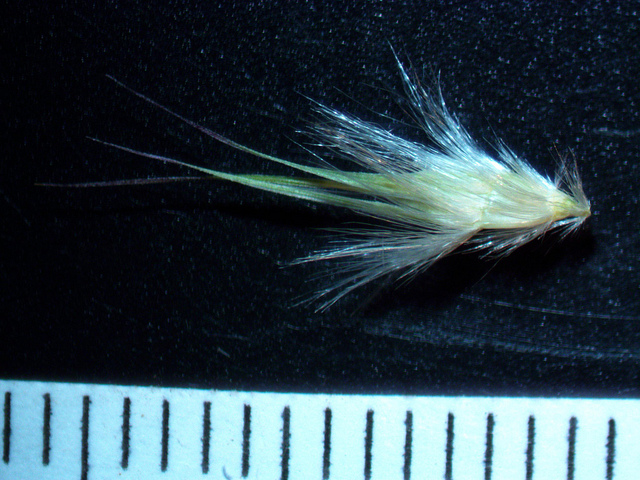


Lobed Wallaby-grass
Rytidosperma auriculatum
Slender tufted perennial to 50 cm with fine very hairy leaves, flat or inrolled and 15 cm long.
| Details | |
|---|---|
| Flora Type | Grasses |
| Former Scientific Name | Danthonia auriculata, Austrodanthonia auriculata |
| Distinctive Features | Very hairy short leaves. |
| Biology | Perennial. More fertile heavy clay-loams and sandy-loams soils in woodland, grassland and mallee. |
| Native Status | Native |
| Flowering Time | Sep-Dec |
| Taxonomy | |
|---|---|
| Phylum | Tracheophyta (Vascular Plants) |
| Class | Magnoliopsida (Flowering Plants) |
| Order | Poales |
| Family | Poaceae |
| Genus | Rytidosperma |
| Species | auriculatum |
Wallaby-grasses are drought hardy, tolerate low nutrient soils, but outcompeted by other plant species. Well-adapted to grazing and other disturbance Rytidosperma species are moderately important fodder grasses with 10-25% crude protein when green, and moderate to high digestibility. Important food source for some insects and birds.
| Interesting Facts | |
|---|---|
| Similar Species | Vegetatively similar to the more widespread R. erianthum, varies in the characteristics of the seed. Often growing together. Taxonomic issues and may be considered in the future as a subspecies of the similar and co-occuring Rytidosperma erianthum |
| Native Status | Native |